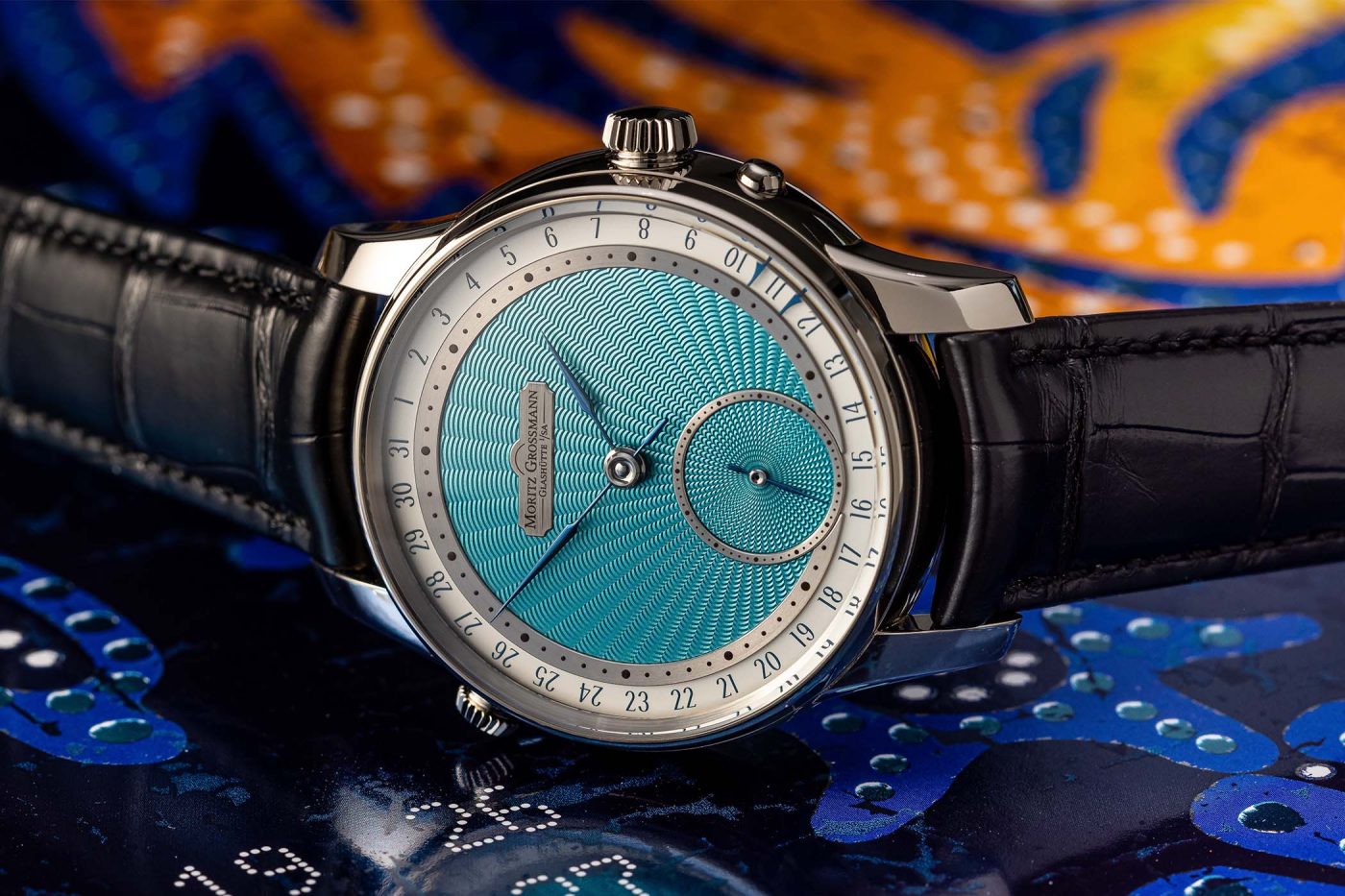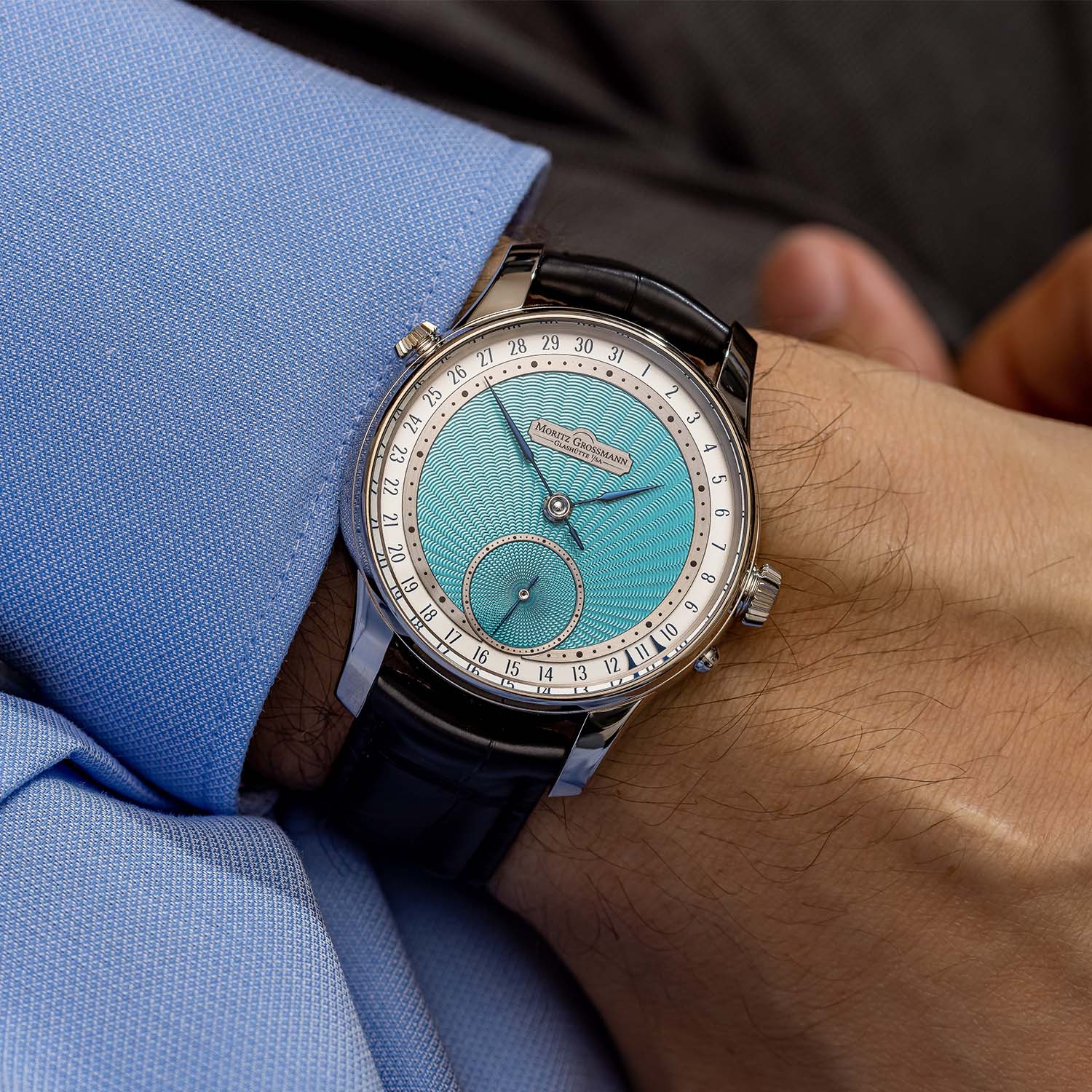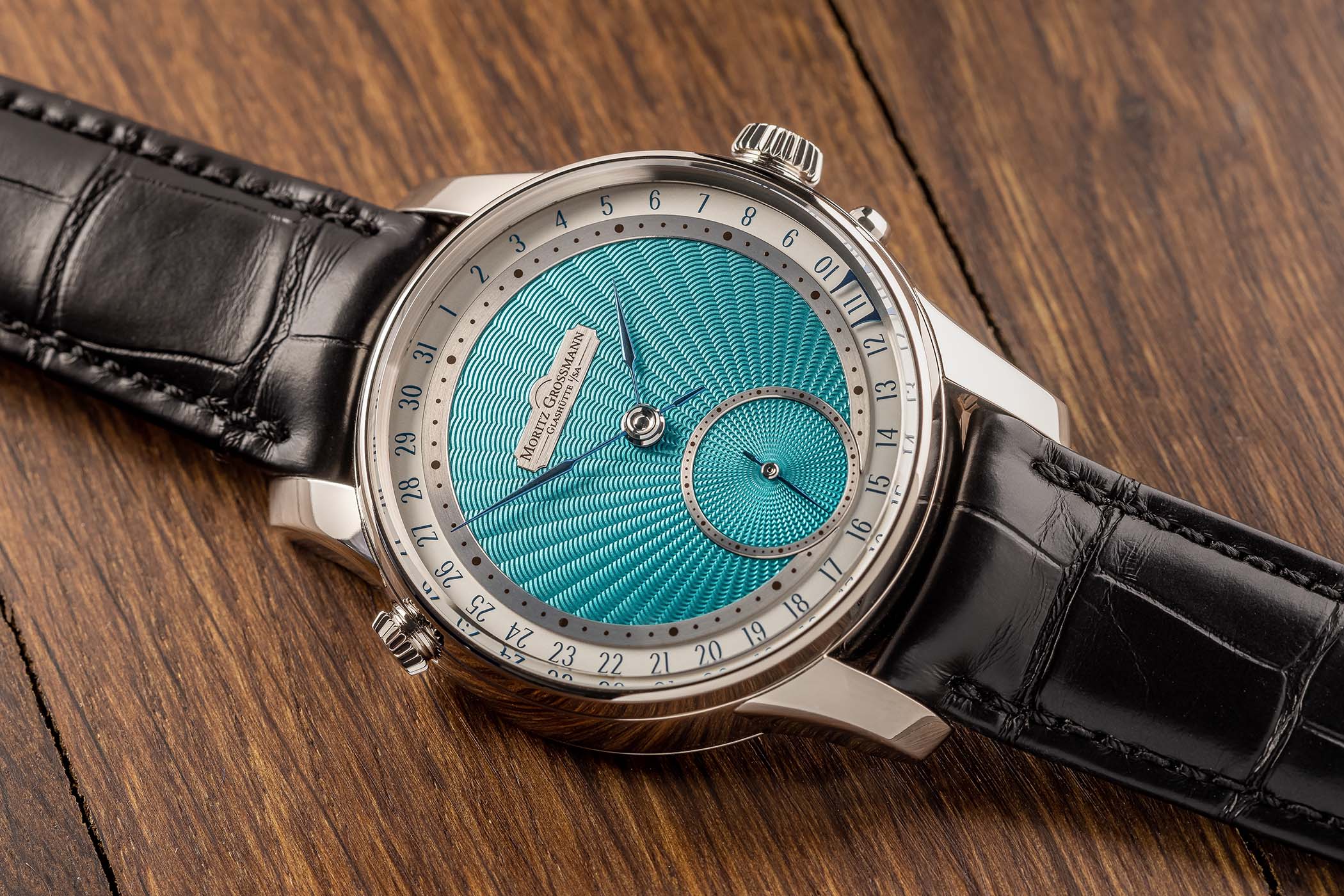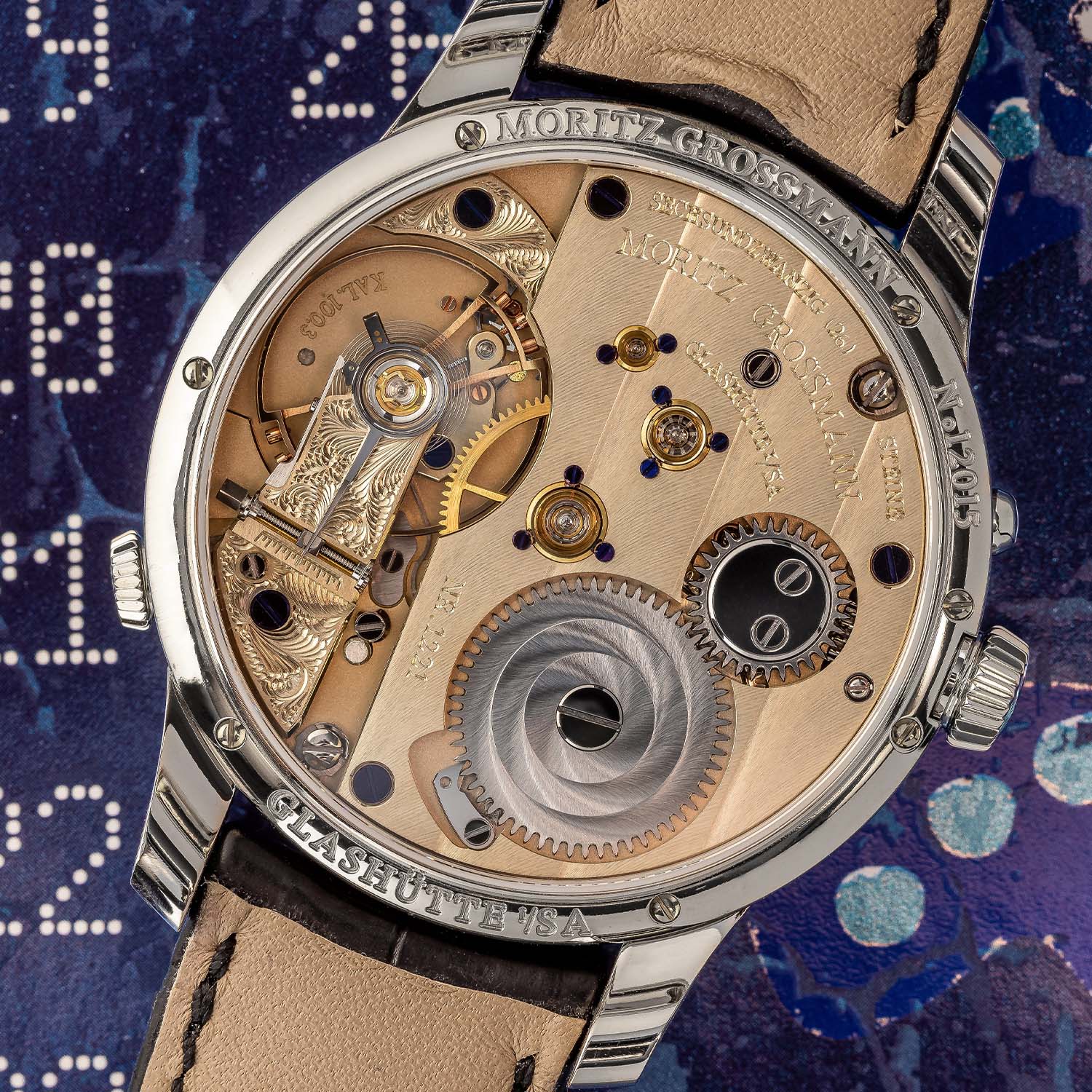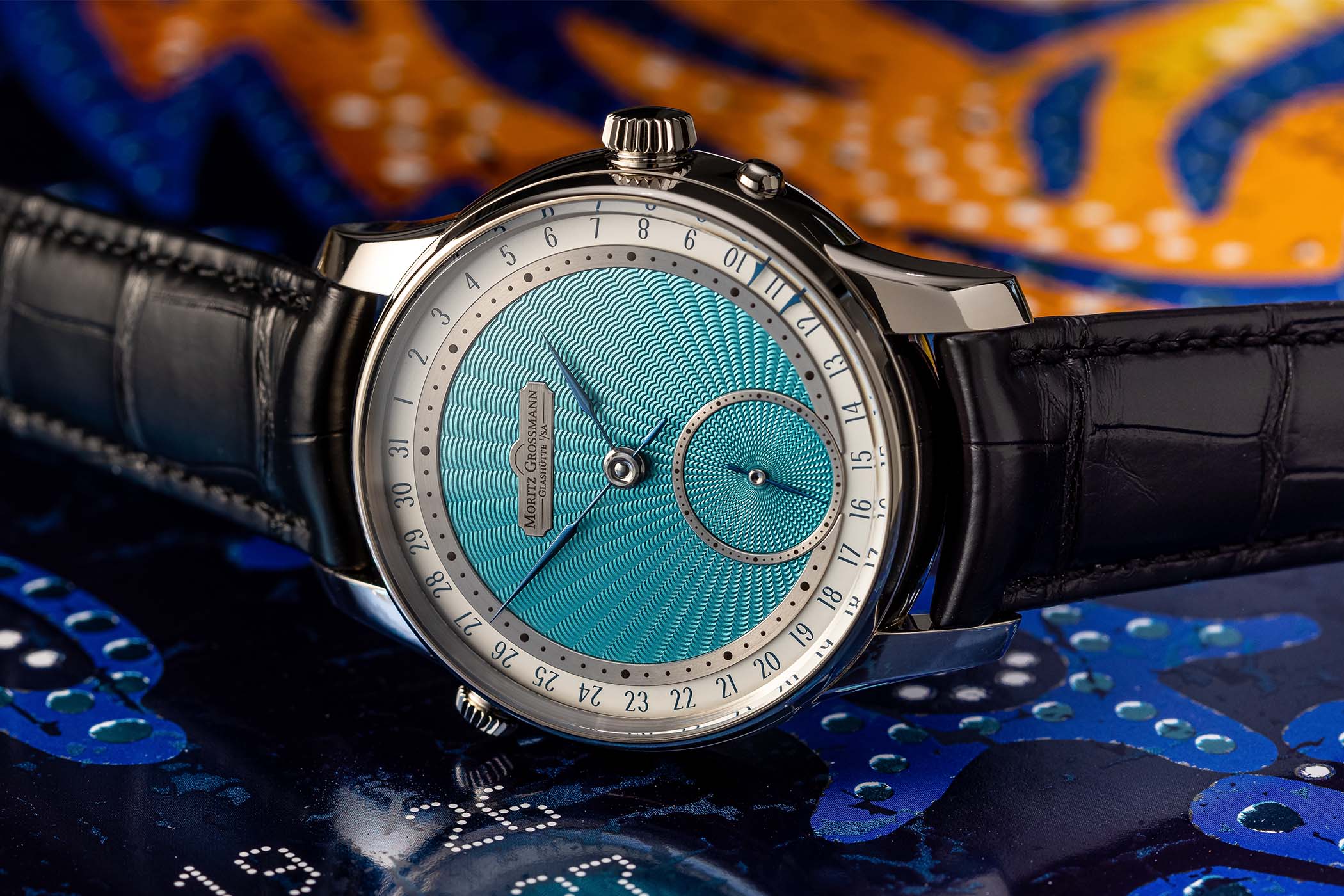BY HARLAN CHAPMAN-GREEN
As I said in one of my recent articles, there are many more watchmakers in Glashütte than just A. Lange & Söhne, Glashütte Original and Nomos. Moritz Grossmann is here to remind us that the little Saxon town of Glashütte is the hub of Germany’s watchmaking prowess. Their new watch makes waves in multiple ways.
The first and most obvious way is the dial with lots of beautiful wavy guilloché, which radiates outwards from the pinion for the sub-seconds hand. This type of guilloché is called ‘wave’ guilloché, and you can see why. The pattern, coloured icy turquoise, folds neatly across the dial while the sub-seconds ring, hands and applied Moritz Grossmann logo float on top. The sub-seconds dial has been treated to a diamond polished for a high gloss, complementing the design. Moritz Grossmann worked with Comblémine SA, Kari Voutilainen’s dial workshop, to make this dial a reality, and they’ve done an exemplary job.
Blued lancet hands indicate the time, and in the photos, they stand out well against the similar-coloured backdrop. Typically, I’d say not to take the press photos too seriously as art renderings make all watches look different to their real-life counterpart, but the images of the watch here seem to be of the real thing, so we can appreciate the depth and complexity of the piece. Around the edge of the dial is a date ring with a blue box moving once a day to indicate the current date. The crown at 10 O’clock on the 41mm x 11.85mm stainless steel case controls this.
Inside the watch and visible through the caseback is the artful calibre 100.3. It’s a beautiful, soulful movement crafted from German silver where all 259 parts are made in-house, including the delicate springs with their complex curvatures. White sapphires secure the bearings in their places, and a signature hand-engraved balance cock supports the balance wheel and escapement assembly, while contrast comes from heat-blued screws. The balance wheel oscillates at 2.5Hz with a power reserve of 42 hours, wound manually by the wearer. Most of the movement is covered by a three-quarter plate with wide striping, a hallmark of the watchmaking from Glashütte.
You might be wondering what the pusher below the crown is for. This is a stroke of genius by Moritz Grossmann. To aid in keeping dust from entering through the crown stem hole (Moritz Grossmann hasn’t said whether this is water resistant), the action of stopping the watch, setting the time and restarting it is broken down into two parts. Pulling the crown to stop the watch and set the time works as usual, except the crown returns to its regular position but the watch remains stopped. Time setting can now commence. The pusher below the crown is depressed to restart the watch, removing the restrictor from the balance wheel. Exactly how necessary this is debatable, but it’s a quirk of the brand’s watches, and we love them that way.
Presented on a hand-stitched alligator leather strap with a steel prong buckle, this watch is limited to 18 examples globally for €42,500. While this may be made of stainless steel, the amount of time going into it from the tiny German watchmaker makes up for the case material’s cost saving.
Visit Moritz Grossmann here.

